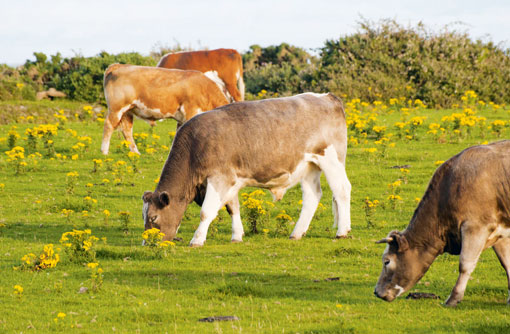Monitor pasture regularly as weeds take hold

Agronomists are urging farmers to monitor pastures regularly, as weeds take advantage of recent unseasonable weather.
Docks have benefited from the recent warm spell and need immediate treatment to curb further spread. And ragwort, buttercup and dandelion are already taking hold in some pastures, particularly where the recent warm spell followed the wetter winter in parts of the west.
Cambridgeshire-based agronomist Duncan Connabeer of crop specialists Hutchinsons says he is getting more calls about ragwort spread this spring.
Weed problems
“Ragwort is spreading and it’s getting worse. My advice is to treat immediately so that grazing doesn’t have to be delayed because of spraying.”
Nettle, dock and thistle have also had a spurt of growth in areas where there has been some spring rain. However, Mr Connabeer advised waiting another couple of weeks before treatment, to allow them to develop lush green growth for the most effective treatment.
Creeping thistle is also appearing in some areas, he said. “But don’t be in a rush to hit this one too early or it won’t be as effective. If it’s treated too soon it will only affect the growth that’s visible and it might even look in a few weeks time as though there has been no spraying at all.”
Chickweed, too, has enjoyed the warm weather, particularly where there was plenty of moisture, but independent grassland consultant George Fisher from Cheshire said its treatment didn’t necessarily need to be a priority.
Treatment
However, dock treatment should be a priority, although Mr Fisher reckoned there were probably not as many docks about as people think.
“A field that’s reckoned to contain 20% of docks usually only has 10%, but even in this sort of extreme weather we’re having, it’s important to plan spraying with an eye on anticipated rainfall.”
While rainfall is something many areas just don’t seem to have very much of any more, some rain within 24 hours of spraying will help the treatment wash through more effectively, said Mr Fisher.
Stuart Sutherland, of Interfarm UK, said mid-April applications to small docks that are growing well in grass mainly grown for silage are most effective.
“Warm and sunny weather are the best conditions for spraying docks, but there also needs to be sufficient moisture. The addition of an approved “wetter” adds to the treatment’s performance by affecting the docks’ leaf wax and allowing the herbicide into the weed more effectively.”
Environmental considerations
Patrick Goldsworthy, who is currently working on a weed control project for EBLEX, said farmers intending to spray weeds must be aware of the risks of chemicals getting into water courses.
“Ground is extremely dry in many areas so it’s essential to discuss weed-spraying plans with an agronomist to make sure there’s no risk of run-off.”
Agronomist David Roberts, of Dow AgroSciences, said conditions were perfect for a surge of weed growth in grassland in certain parts of the UK, with chickweed a particular problem in autumn-sown leys.
“Chickweed is quick to colonise any bare patches in gappy swards. It can soon out-compete perennial ryegrass for moisture, space and nutrients. Herbicides give good control against chickweed and won’t harm the grass, even when it is very young,” he said.
